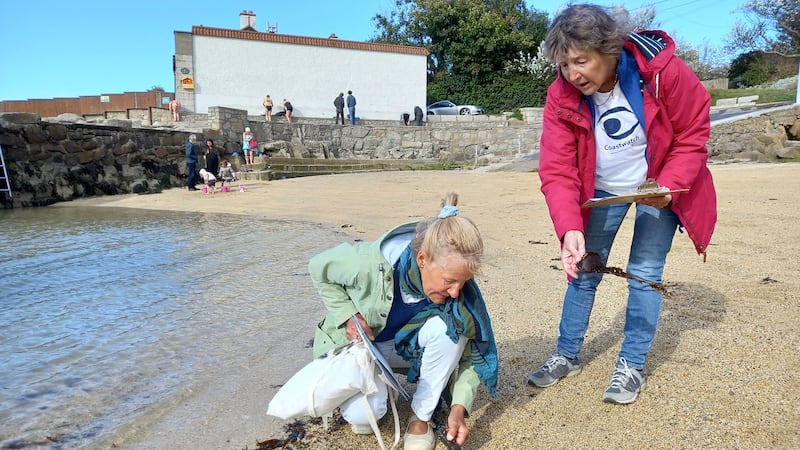An imminent scaling-up of urgently-needed management and protection of Ireland's vast coastline has been welcomed by Coastwatch co-ordinator Karin Dubksy
Launching this year's shoreline survey, she underlined the importance of the Marine Area Planning (MAP) Bill which is about to come law, with the potential to better manage shorelines and issues highlighted by Coastwatch's surveying.
Hundreds of volunteers will be surveying parts of the island of Ireland's 7,500 kilometre coastline – including Norther Ireland – over coming weeks to chart nature and highlight threats in the form of marine pollution in one of the country's largest citizens' science projects held annually.

"In a few months' time, we should have a fit for purpose marine area management system in place, with local authorities resourced to protect the near shore zone for which they will take on responsibilities when the MAP Bill passes into law. Public participation will be an integral part of this," Ms Dubsky added.
She highlighted the case of Tramore back marsh in Co Waterford, which despite being a protected site "is devoid of management measures for small scale commercial activities like the sand eel netting, commercial winkle picking, crab and wrasse fishing, or indeed sea samphire harvesting".
“Most activities are concentrated in a narrow coastal band which is extremely important for nature and so vulnerable to over exploitation, especially around accessible areas,” she noted.
Management measures deployed in other countries, notably France, should be deployed, she suggested.
“Their local authorities have coastal management units and staff and plans are drawn up with national guidance but local fine tuning, to benefit both nature and [PROVIDE]a significant number of local jobs.”
The Coastwatch autumn survey runs until October 15th and entails walking a chosen 500-metre of sea or estuary shore around low tide and reporting back on land and shore use; marine litter, and the selection of wildlife and plants. Surveyors are also provided water kits to test nutrients in small streams.
“This citizen science work is valuable in itself,” she underlined. “Detailed local site information will be vital in the new planning system. You might find a new seagrass meadow or an oil tank leak which could be dealt with quickly as noticed early and reported. Archaeological features might only be exposed by shifting silt or erosion and then lost.”
Coastwatch survey data is also GIS mapped so it can be compared and combined with relevant official data. “You can only protect what is known,” Ms Dubsky said.
“There is such a wealth of shores to choose from,” she pointed out. Coastwatch offers the following advice: “Choose either a shore you know well, or a place where you suspect you might find something noteworthy positive – like seagrass or rich lugworm flats, or interesting rock pools, or bad so that it gets addressed like litter accumulations or a raw sewage pipe.”
She welcomed participation by the Irish Farmers' Association for the first time. "Most of Ireland's of shore is owned by farmers, yet we rarely hear how coastal farmers and how they are dealing with climate change and sea level rise," noted Cork Coastwatch coordinator Bernie Connolly.
At a recent meeting in West Cork with IFA representative Harold Kingston and local officers, the importance of capturing this information was highlighted. "It's everything from field boundary erosion, loss of historic landmarks and access routes and marine litter brought by storms, to local history, archaeology and nature knowledge, like chough nesting sites and otter holts," she explained.
The survey started in 1987 in a collaboration with The Irish Times; some core questions have stayed the same since. Details on how to participate is available at www.coastwatch.org








